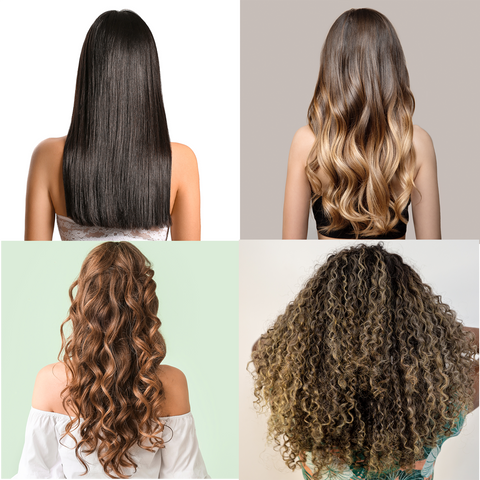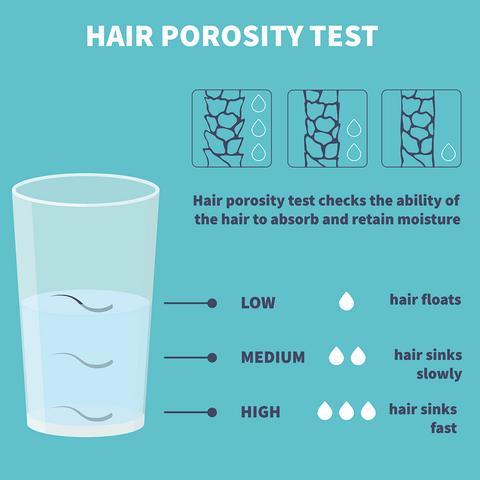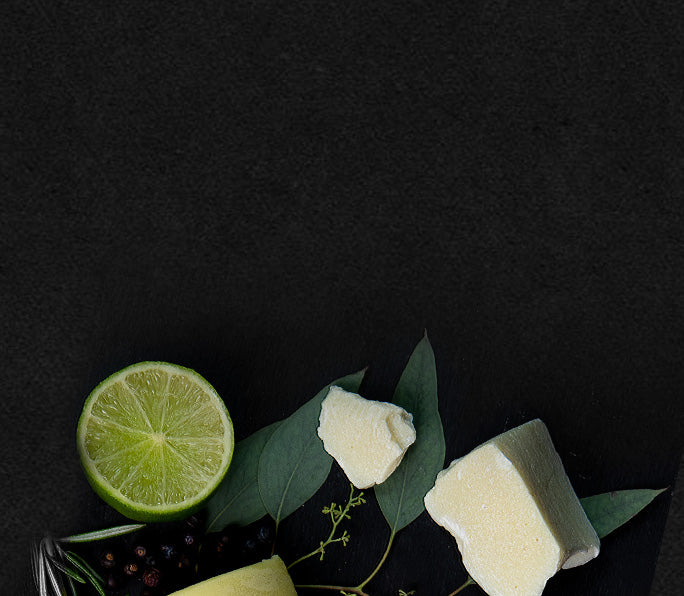What Is Your Hair Type?
In my youth I had pin-straight hair and was envious of friends with wavy and curly hair. But those friends were jealous of my straight hair! Whether your hair type is straight, wavy, curly, coily, or somewhere in between, your locks are beautiful.
In the same way that understanding your skin type is important for creating an effective skincare routine, determining your hair type can play a huge role in helping you to reach your hair goals.
Hair type has 4 major categories: straight hair (type 1), wavy hair (type 2), curly hair (type 3), and coily hair (type 4). These 4 types of hair are further categorized into A, B, and C subtypes creating 12 total categories.

The best way to determine your hair type is to see your hair in its natural state. By simply looking at your hair you can recognize some obvious characteristics. The next time you wash your hair, allow it to air-dry without any styling or hair products. This will help you to define the natural shape or pattern (texture) of your hair. For example:

- If your hair dries straight without a bend or curl, then you have straight hair (type 1).
- If your hair dries with a slight curve or “S” shape, then you have wavy hair (type 2).
- If your hair dries with a defined curl, then you have curly hair (type 3). This type of curly hair has springy ringlets or corkscrew curl patterns but is not as dense as coily hair.
- If as your hair dries it shrinks to form tight curls or dense spirals, then you have coily hair (type 4) which is often called a "natural" hair type. This hair type is more fragile and prone to breakage than others, requiring a more specialized hair care routine.
It is important to remember that most people do not have just one type of hair. They often have two different hair textures on various parts of their head.
Each of these hair textures will need special care and attention to enhance its natural best characteristics. Also, even though two people share the same natural wave, it does not mean they possess the same exact hair type. You are unique!
What Is the Density and Thickness of Your Hair?
The words "thick" and "thin" can be confusing since you can have a lot of very thin hair and vice versa.
The density is the thickness or diameter of an individual hair strand. To determine your hair density use a single strand hair and compare it to the size of a piece of typical sewing thread. Fine hair is thinner than the thread, medium hair is similar in width, and coarse hair is wider. Hair density can affect how it will react to certain products and how well it will hold different hairstyles. There are 3 basic categories:
- Thin or fine
- Medium
- Thick or coarse
Thin hair does not style very easily. Medium hair is relatively easy to style and can hold curls for a longer time period. Thicker strands are very easy to curl, but because they are less pliable, they can be difficult to style or hold their shape.
Overall thickness refers to the total amount of hair on your scalp, which can range from thin to thick. When you gather your hair into a ponytail how much hair can you collect?
What Is Hair Porosity?
 Porosity refers to your hair’s ability to absorb moisture as well as hair products. You can easily determine the porosity of your hair with a simple experiment.
Porosity refers to your hair’s ability to absorb moisture as well as hair products. You can easily determine the porosity of your hair with a simple experiment.
- Place a single strand of hair into a bowl of water.
- Does the strand sink to the bottom? If yes, it has high porosity, which means it is soaking up a lot of moisture due to gaps or tears around the cuticle.
- Does the strand sink, but only a bit? If yes, your hair is absorbing just enough moisture to keep it healthy and well-balanced.
- Does the strand float above the surface of the water? If yes, your hair has low porosity, which means it does not absorb moisture easily.
It seems like hair with high porosity would be well hydrated all the time since it can easily absorb moisture easily. However, due to the gap areas around the cuticle, the hair also loses moisture very easily, which can result in hair that is dry, brittle, frizzy, and prone to breakage.
On the other hand, that flattened cuticles of hair with a low porosity actually blocks moisture from being absorbed into the strands. Since hair care products are not readily absorbed, product buildup on hair strands is often a problem. Hair care products should be applied sparingly while hair is still damp so product is more easily absorbed and distributed.
To keep your hair healthy and nourished, it is important to develop a haircare routine that includes proper hydration. Knowing your hair type is crucial, as it helps you choose the right products for straight, wavy, curly, or coily/kinky hair.

